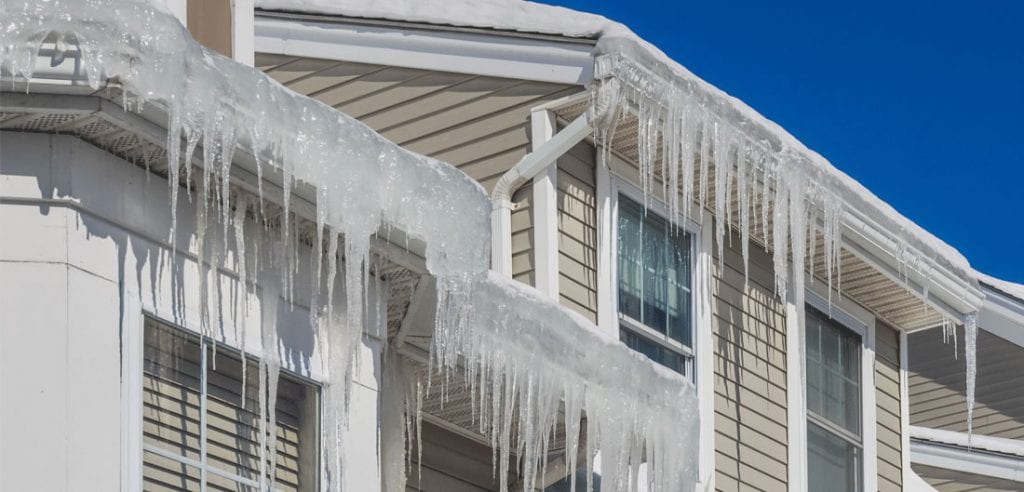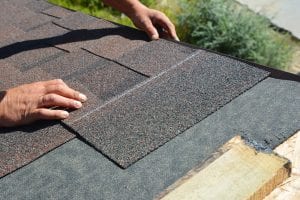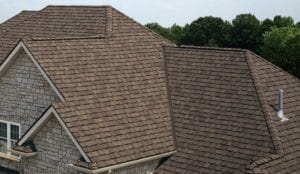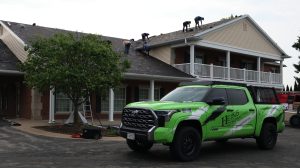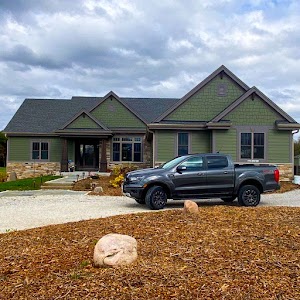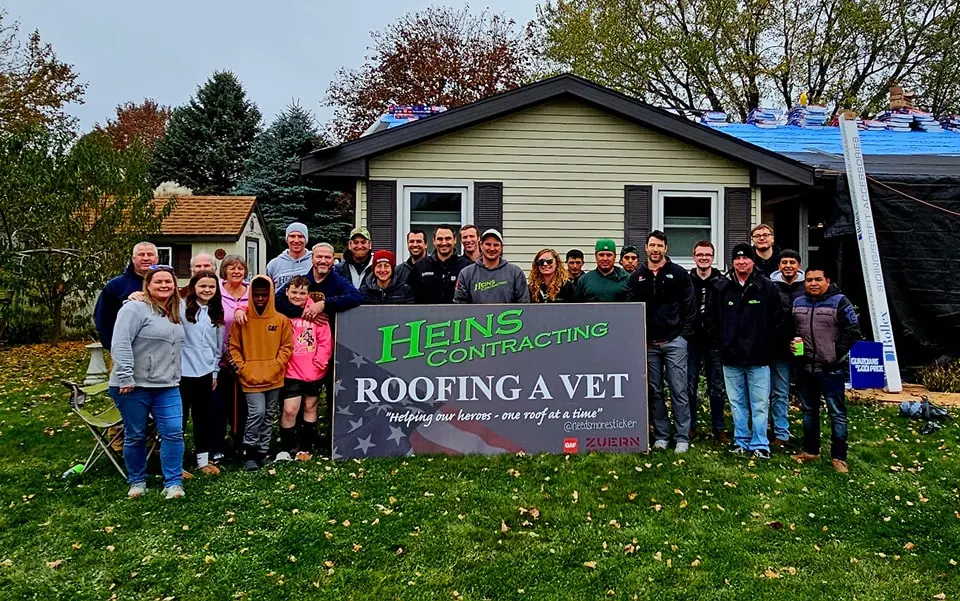When winter arrives, there are many home people who enjoy this season and there are those who hate it due to the effects that winter brings. There are many homeowners who fear heavy snowfall because of ice dams. Ice dams destroy one’s house and ruin the house structure. Many homeowners are aware of it while some don’t, some know how to handle it and some don’t.
In this article, we will make clear all the things about ice dams that include.
- What are Ice Dams?
- How Ice dams damage Roof?
- What causes Ice dams?
- How to stop/ prevent Ice dams?
So, let’s get started onto these topics.
What are Ice Dams?
When there is a snowfall all the snow gathers in the slopped roofs. Due to the heated building, the snow melts and forms a ridge of ice that forms at the edge of a roof which is called ice dams. Due to this transformation of snow into ridge ice, it prevents melting snow which is water from draining off the roof. When the water does not drain off the roof it backs up behind the dam and starts to leak and damage walls, ceiling and other parts of the house structure.
How Ice dams Damage a Roof?
Ice dams can cause serious damage to the roofs. Well, Ice dams usually form when the melted snow rolls down the slope to the eave and due to freezing climate, it freezes again before dripping off the roof. When this process continues, again and again, a thick layer of ice at the eave forms causing a bigger dam and create a pool of water.
- When the snow continues to melt and backs up onto the dams. The pool of water can leak into the home, under the shingles which cause interior damage to wall, ceiling, insulation and other areas too.
- The melted snow can re-freeze and form the bulk of ice to build up in gutters, this can cause damage to your roof covering and solar panels too.
When the water cannot drip off your roof and due to the freezing climate, it will re-freeze again, this build-up will grow onto your roof and cause weight problems resulting in collapsing the gutters. - If the ice dams are not removed in time it can damage your plaster, the paint of the house can also peel off.
- Many water-related problems can occur if the affected area is not dry off soon.
- Due to the moisture from ice mold and mildew can grow that can will cause an additional problem of mold and mildew.
- When the water reaches the various part of the roof, wood roof deck it will soak the wood which can cause rooting of woods.
- If there was any windstorm or hail storm before the snowfall, you must make sure that windstorms or hailstorms haven’t caused any damage because when the ice dams form it can cause additional damage to the roof and your roof might collapse.
- If you have old roofs more than a decade or two than there will be more leaks and water will reach the insulation of the house.
- Icicles are beautiful but it can cause a serious problem it not taken care of, it can tear up the gutters, loosen shingles or can even fall.
- At this point you might have known much about the ice dams and its effects, now when you know about these effects you must be willing to learn how it occurs and prevention then let’s dive into it.
What causes Ice dams?
Icicles extending from eaves which you often find pretty are the signs that your roof is the victim of Ice dams, or if there is water leaking from the roof and windows are other signs of the ice dams.
There are basically three things that cause Ice dams:
- Roof covered with snow
- Heat loss from a house
- Outside temperature
These three factors are the reasons that you have icicles hanging in your eaves and water-dropping form your roof.
Ice dams are formed on the eaves of the roof. Eaves are the part of the roof that doesn’t cover the wall of a building. So, when the temperature inside the house loses snow on the roof melts down and drips down. But when it reaches the eaves the house temperature doesn’t come in play and due to the freezing temperature of outside the water re-freezes in the eaves.
The snow on the roof surface that is above the freezing point will melt. The melted water of the roof when reaches the portion of the roof (eaves) that is below freezing temperature it re-freezes and forms the ice dams. The ice dam grows bigger as it is fed by the melting snow above it. So this is how the attic space is a field with water, the water finds crack and openings in the exterior roof.
How to Prevent and deal with Ice dams?
There are some wise people who already know about the ice dams and have already taken measures to stop it. There are homes that do not have ice dams.
Here are some tips that you can follow to prevent Ice Dams.
- As mentioned above, the three factors are essential for forming the ice dams one of them is snow if there is no snow you there are no ice dams. So, remove the snow from the roof at the earliest.
- Controlling the heat loss from the home, have proper ventilation and insulation.
Make sure there are no lights fixtures near the attic area, lights produce heat and helps in melting the snow. - When you see the icicles, which is the sure sign of ice dams it indicates that there is a ventilation problem.
- When ice dams are already formed and water is leaking you can make a path through the ice dams so that the water behind the dam is drained off.
- If your roof is old and needs repair don’t hesitate to invest in the roof. The cracks and leaks on the roof will eventually become the way for the water to flow on the walls, or even collapse because of the snow load.
- Hire professionals to install the roof which can carry the estimated snow loads and won’t hamper your house structure.
- Use heated cables which will help you in preventing ice dams. It will help in maintaining your roof’s temperature heating it from the outside.

